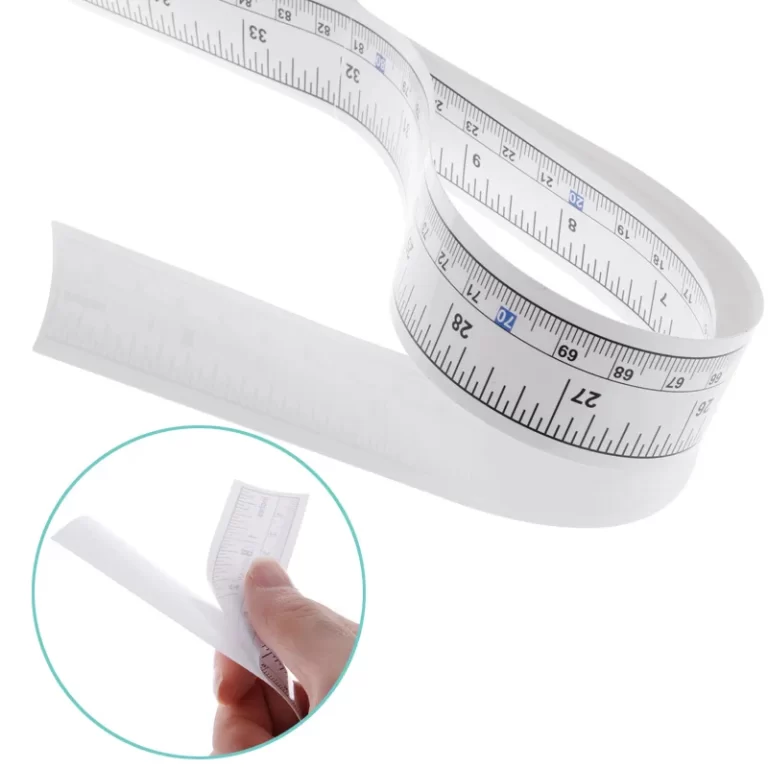
Top Features to Look for in a Reliable Tape Measure Laser
Introduction
Modern measurement tools are evolving with technology, and the tape measure laser is a standout. It combines traditional measuring capabilities with advanced laser technology, offering precision and speed. This innovative tool is transforming how people measure spaces and dimensions across various applications.
What is a Tape Measure Laser?
A tape measure laser is a device that uses laser technology to measure distances quickly. Unlike traditional tape measures, it does not rely on a physical tape. Instead, it emits a laser beam to calculate distances by measuring the time it takes for the light to reflect back. This technology ensures accurate and fast measurements, making it highly efficient for both small and large-scale applications.
Tape measure lasers are commonly used by professionals in construction, interior design, and real estate. They are lightweight, portable, and often come with features like memory storage, area calculations, and unit conversions. The compact design and advanced functionality make them ideal for various measurement needs.
How Does a Laser Measure Work?
Laser measures work by emitting a laser beam towards a target surface. The device calculates the distance based on the time the light takes to travel to the target and back. This process is known as “time-of-flight” measurement. Some laser measures also use phase-shift technology for added precision.
Users simply point the laser at a surface, and the tool displays the measurement on its digital screen. Many laser measures can calculate multiple dimensions, such as area and volume, with built-in formulas. Additionally, they often include features like Bluetooth connectivity for transferring data and compatibility with apps for detailed project tracking.
This tool is reliable in situations where traditional tape measures might be less effective, such as measuring inaccessible areas or long distances. However, proper usage and calibration are essential for ensuring accurate results.
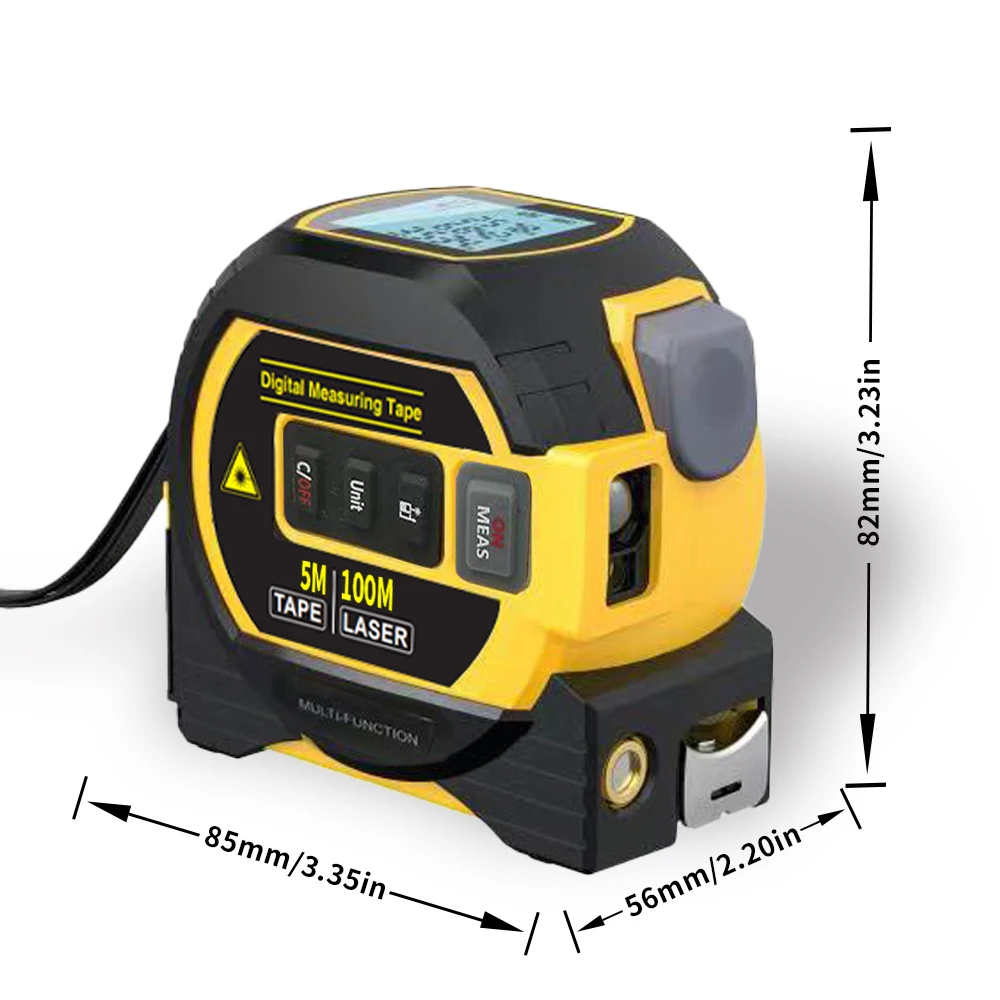 Comparing Laser Tape Measure and Traditional Tools
Comparing Laser Tape Measure and Traditional Tools
Accuracy: Laser vs Manual Measurements
One major difference lies in accuracy. Tape measure lasers provide highly precise and error-free readings. Traditional tape measures rely on manual alignment, which can result in mistakes. Laser technology eliminates errors caused by twisted or bent tapes. It allows users to measure long distances with incredible accuracy and minimal effort. For professionals requiring exact dimensions, tape measure lasers are the preferred choice.
Speed and Convenience in Measurements
Speed is another key factor. Tape measure lasers allow fast and simple measurements with one hand. Users just aim the laser and press a button to get results instantly. Traditional tape measures take longer, especially for larger distances or complicated spaces. They often require an extra hand to hold the tape steady. Tape measure lasers save time and reduce frustration during complex projects.
Versatility Across Different Projects
Tape measure lasers excel in versatility. They can measure length, area, and volume effortlessly. Advanced models come with features like memory storage and Bluetooth connectivity. Traditional tools are simple and effective but limited to measuring single dimensions. Tape measure lasers are ideal for professionals in fields like construction, design, and real estate. However, traditional tape measures remain practical for small, straightforward tasks.
Advantages of Using a Laser Tape Measure
Enhanced Precision for Complex Measurements
Tape measure lasers provide exceptional accuracy for intricate measurement tasks. They excel in detecting minute differences and ensuring consistency. For projects needing exact dimensions, these tools outperform traditional methods effortlessly. Architects, contractors, and designers often rely on them for precise layouts. Their ability to measure long distances with minimal error is invaluable. Unlike physical tapes, they are not prone to bending, sagging, or misalignment.
Laser tools also work well in irregular or hard-to-reach spaces. They effectively measure corner alignments, diagonals, or high ceilings. Advanced models offer features like area and volume calculations, ensuring precision in complex scenarios. Such advantages make tape measure lasers crucial for large-scale and detailed projects.
User-Friendly Features and Smart Integrations
Tape measure lasers are designed for ease of use. They feature digital displays, making readings easy to interpret. Features like memory storage allow users to save multiple measurements for later access. Bluetooth-enabled models let users transfer data directly to devices or apps. This integration simplifies project planning and enhances productivity.
Smart tools even have unit conversion options, enabling quick switching between metric and imperial systems. Many models come with built-in formulas for calculating dimensions like area and volume. Compact and lightweight, they are easy to carry and store. The intuitive one-button operation reduces the learning curve and speeds up work.
Reducing Human Error in Measurements
Human error is a common issue with traditional measuring methods. Tape measure lasers eliminate many manual inaccuracies, ensuring reliability. The digital readout prevents mistakes in reading measurements, especially at awkward angles. By reducing manual alignment and fumbling with tapes, these tools save time and effort.
Laser tools handle tasks like checking level alignments or measuring uneven surfaces with precision. They remove challenges like sagging tapes or shifted ends, which often lead to errors. By minimizing guesswork, tape measure lasers build confidence in results, making them a trusted choice for professionals.
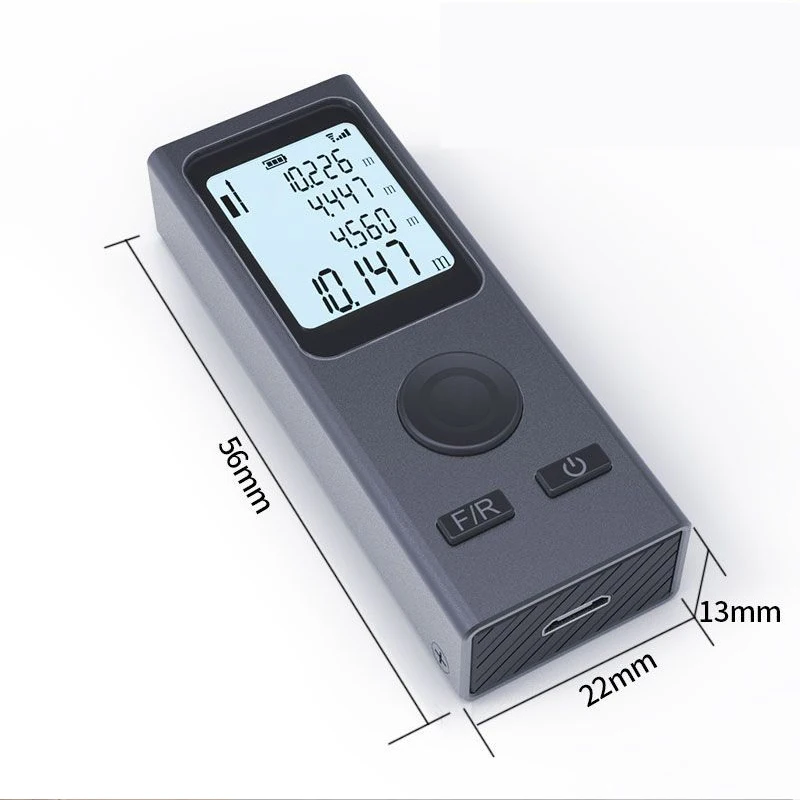 Limitations of Laser Tape Measure Tools
Limitations of Laser Tape Measure Tools
Tape measure lasers are highly effective but have some limitations worth noting. While they enhance precision and efficiency, certain scenarios and conditions make traditional tools a better option. Understanding these limitations ensures users can choose the best tool for their needs.
Scenarios Where Traditional Tools Excel
Traditional tape measures often excel in simple, small-scale tasks. For basic home projects like measuring furniture or wall lengths, a manual tape measure is practical and quick. It does not rely on batteries or technology, making it dependable in situations where power sources are unavailable.
Manual tools are also preferable in tight spaces or where laser beams cannot reach. For example, measuring inside corners or tiny objects often requires physical contact that tape measure lasers cannot achieve. Traditional tools are versatile and straightforward for such precise manual tasks.
Their low cost and easy accessibility make them ideal for casual users. Small DIY jobs or tasks with minimal measurement precision needs can easily be handled with simple tools, proving their ongoing relevance in day-to-day applications.
Potential Challenges with Environmental Conditions
Environmental factors can also impact tape measure lasers. Bright sunlight can interfere with laser visibility, making outdoor measurements tricky. The laser beam might be hard to see or may not reflect well on certain surfaces like glass or shiny metals.
Dusty, wet, or slippery environments might hinder the accuracy of lasers or affect the device’s calibration. Traditional tools often remain unaffected by such conditions, making them more reliable in challenging workspaces.
Tape measure lasers require stable surfaces for accurate readings. In unstable conditions, measurements can become unreliable. Additionally, dirt or debris on the lens can disrupt the laser beam, reducing functionality.
Lastly, tape measure lasers depend on batteries or power sources to function. Without a charged battery, these tools become useless, whereas manual tape measures work without any external power. Users must ensure their laser tools are fully charged before starting a project, particularly for longer tasks.
When to Choose Laser Tape Measure Over Traditional Tools
Choosing between a tape measure laser and traditional tools depends on the project’s needs. Laser tools excel in many scenarios but aren’t always the best choice for every situation. Knowing when to use each tool ensures efficiency, accuracy, and cost-effectiveness.
Best Projects for Laser Tools
Tape measure lasers are ideal for large-scale and professional projects. For tasks requiring high precision, such as construction or interior design, laser tools save time and ensure accurate measurements. They work well for measuring long distances, such as room dimensions or outdoor spaces.
Complex measurements, like calculating area, volume, or diagonals, are easy to handle with laser tools. They also shine in settings where accessing corners or heights is challenging. Architects and real estate professionals often rely on laser tools for these tasks.
For projects needing smart integrations, such as data transfer or app compatibility, advanced laser tools are useful. They streamline workflows and support planning. Tape measure lasers are also excellent for detailed layouts or complex plans, reducing manual errors.
Cost Considerations and Budget
Tape measure lasers cost more than traditional tape measures. They involve higher upfront investment due to advanced technology. For professionals, this investment often pays off by improving productivity and accuracy in complex jobs.
Budget-conscious users should assess the frequency and type of use. For casual, small-scale jobs, traditional tape measures are cost-effective. They work well for quick tasks like furniture placement or wall measurements.
Maintenance is another factor to consider. Laser tools may need calibration or battery replacements, adding ongoing costs. Traditional tools have minimal maintenance and no battery dependency, making them economical for simpler needs.
Evaluate your project type, accuracy needs, and budget before deciding. Sometimes, having both tools can provide maximum versatility across various tasks.
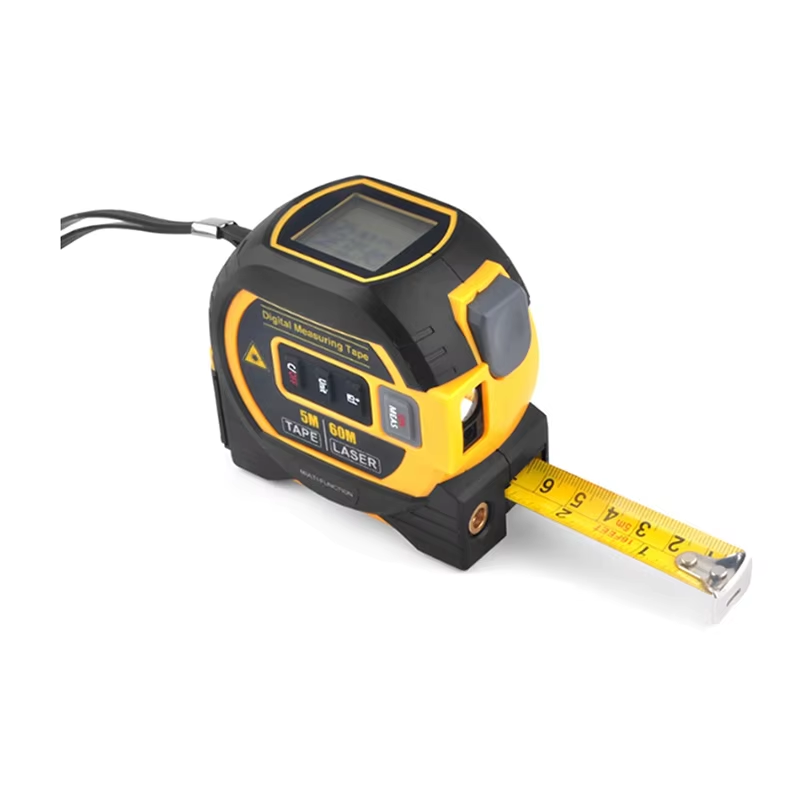 Popular Laser Tape Measure Models and Their Features
Popular Laser Tape Measure Models and Their Features
Tape measure lasers come in various models, offering diverse features to suit different needs. These advanced tools combine precision technology with user-friendly designs, helping professionals and hobbyists alike.
Top Brands and Specifications
Several known brands lead in producing tape measure lasers. Each offers unique features and benefits:
- Bosch: Bosch models are famous for their durability and accuracy. Many include Bluetooth for data transfer. They often feature area calculation and long-distance measuring capabilities.
- Leica: Leica laser measures are ideal for professionals needing high precision. Their compact designs and rugged builds make them perfect for worksites. Advanced models support wireless integration.
- DeWalt: DeWalt excels in durable designs suitable for tough environments. Their models offer large memory storage and user-friendly interfaces. Many have weather resistance and extended battery life.
- Milwaukee: Milwaukee offers budget-friendly options that retain essential features like accurate measurements and compact designs. Their tools are ideal for casual users seeking reliability.
- Fluke: Fluke focuses on advanced measuring tools with superior accuracy. They include features like automatic calibration and advanced formulas for complex measurements.
Ensure that the brand you choose matches your specific project needs, balancing price and features.
Key Features to Look for When Buying
When selecting a tape measure laser, consider the following features to ensure the best purchase:
- Range: Check the maximum measuring distance. Longer ranges are useful for large-scale projects.
- Accuracy: Opt for models with high precision. Look for specifications like ±1mm for minimal error.
- Memory Storage: Select tools with memory functions to save multiple measurements for complex tasks.
- Compatibility: Choose models with Bluetooth or app integration for easier data management and project planning.
- Battery Life: Pick devices with durable batteries to avoid frequent replacements or recharges.
- Durability: Ensure the device is suitable for your work environment. Water-resistant or shockproof models are excellent for rough conditions.
- Unit Conversion: Pick tools with unit-switching options for flexibility, such as metric to imperial systems.
- Design: Lightweight and compact designs are easy to carry and use, reducing fatigue during use.
Selecting a tape measure laser with the right features guarantees efficiency and long-term utility for your projects.
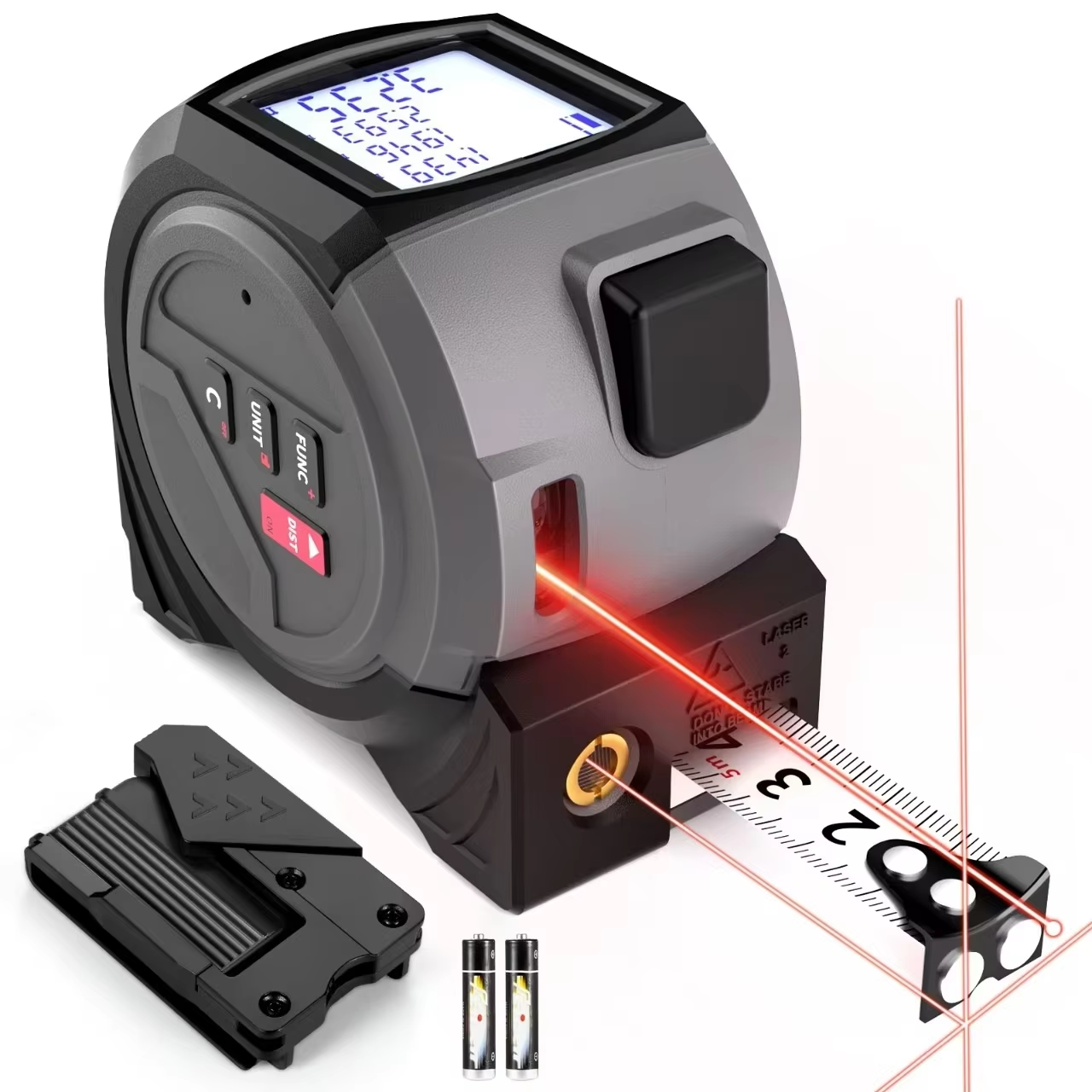 Tips for Using a Laser Tape Measure Effectively
Tips for Using a Laser Tape Measure Effectively
Calibration and Maintenance Tips
Proper calibration ensures accurate measurements from a tape measure laser. Here are key steps:
- Follow Manufacturer Guidelines: Check the manual for calibration instructions specific to your model.
- Test on Known Distances: Use a fixed, known measurement to confirm device accuracy.
- Regularly Check the Lens: Clean the laser lens to prevent dust or debris interference.
- Store Safely: Keep it in a protective case to avoid damage during storage.
- Avoid Drops or Impacts: Handle the tool carefully to maintain alignment and precision.
- Update Firmware: For advanced models, update software when recommended to improve performance.
Maintenance preserves the device’s life. Clean regularly, avoid water exposure, and replace batteries promptly.
Common Mistakes to Avoid
Avoid these errors to ensure smooth operation and reliable results:
- Ignoring Calibration: Regular calibration is key to maintaining measurement accuracy.
- Not Considering Reflective Surfaces: Avoid aiming the laser at shiny materials like glass or metal.
- Using in Bright Sunlight: Bright environments can reduce laser visibility and accuracy.
- Improper Positioning: Hold the tool steady and level for consistent results.
- Overlooking Battery Levels: Charge or replace batteries to prevent sudden power loss.
- Skipping Measurements Checks: Verify readings, especially for critical dimensions.
By following these tips and avoiding mistakes, users can maximize the efficiency of their tape measure laser.
Frequently Asked Questions About Laser Tape Measure
Can a tape measure laser work through glass?
No. The beam reflects off glass. Always aim at solid surfaces.
Is it safe for eyes?
Yes. Class 2 lasers are low-power. Avoid direct eye exposure for long periods.
How do I calibrate it?
Follow the manual. Some self-calibrate. Others need factory service.
What affects accuracy?
Dust, fog, or bright sunlight interferes. Aim at matte surfaces for best results.
Can it measure curves?
No. Only straight-line distance. Use wheel measures for irregular paths.
Do they work outdoors?
Yes. But bright sun reduces visibility. Shade the target area.
Where can I buy reliable tape measure laser devices?
Hardware stores, online retailers, and specialty tool shops sell them. Read reviews first.
 Conclusion
Conclusion
Summarizing the Key Benefits of Each Tool
Tape measure lasers and traditional tools both offer distinct advantages. Tape measure lasers stand out for precision and speed. They handle complex measurements, such as area and volume calculations, with ease. Their smart features, like digital displays and Bluetooth connectivity, enhance productivity. These tools are ideal for professionals and large projects.
Traditional tape measures are simple and reliable. They work well for small, straightforward tasks. They don’t rely on batteries, making them dependable in all situations. For low-cost and easy-to-use solutions, manual tools remain effective.
Both tools are valuable depending on the task’s scope and complexity.
Choosing the Right Tool for Your Needs
Choose a tape measure laser for tasks demanding accuracy and efficiency. They excel in construction, real estate, and interior design. They save time and reduce human error for long or challenging measurements. These tools are worth the investment for frequent, professional use.
Opt for a traditional tape measure for basic home projects or tight spaces. It’s affordable, portable, and perfect for occasional use. Manual tools are great for those on tight budgets or with simple measurement needs.
Carefully assess your project requirements to select the most suitable tool. Having both tools can maximize versatility and efficiency across various tasks.

